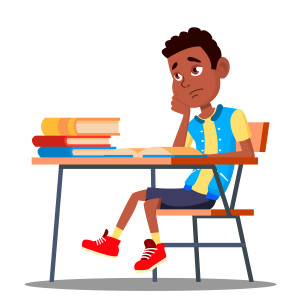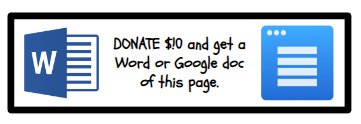Did You know?
- Struggling readers read less than their grade-level peers as they are always asked to read aloud.
- Simply reading daily contributes to accurate, fluent, and high-comprehension reading development.
- The goal is for reading proficiency. Students need to know when they are and are not comprehending. They need to use a variety of strategies to decode* and comprehend. Good readers are good thinkers!
*Parents, if your child is a struggling reader or even just learning to read, you must teach them to sound out words and use decodable texts. PLEASE do NOT teach your child to read by using predictable books. Predictable books are the leveled books and go something like this: I like to dance. I like to climb. I like to hike. . . Children aren’t “reading” but guessing based on the pictures. Don’t encourage guessing! Words like dance, climb, and hike have advanced spelling patterns that young children haven’t been taught yet. Stick to decodable texts so your child can be introduced to phonics systematically and SOUND out words. DECODING the LETTERS is READING!
A faulty method of teaching reading is comprehension first, which involves having the child use context clues to read. However, the science of reading has taught us that children need phonics first—to look at the letters in words! When children are stuck, they need to sound it out!
- Before your child reads a book, they should do a picture walk (look at all of the pictures), make connections with the pictures (What does this story remind them of? What is happening in the pictures?), and make predictions. This sets a purpose for reading ~ to confirm or revise predictions.
- Try echo reading. The parent reads a page or paragraph aloud, and the child immediately reads it back.
- Try choral reading. The parent and child read the text aloud at the same time.
- Try partner reading. The parent and child each take turns reading a page or paragraph aloud.
- Have your child practice stating who/what each page or paragraph is about after reading it.
- Kindergarteners through Level F (mid-1st grade) should be pointing to each word with 1:1 correspondence.
- Visit my Sight Words page. Be sure your child is learning to recognize these words/phrases automatically.
- Visit my Phonemes page. Be sure your child is aware of the various sounds and spelling rules.
- Visit my Rimes page. Have your child practice these chunks in words for instant word recognition.
- Get books at your child’s level at the public library with these lists of books: Book Levels A-J, Book Levels K-P, Book Levels Q, and Up. I urge you, however, to use decodable texts for beginning readers.
- Please read my Expectations By Grade Level pages for kindergarten, 1st grade, 2nd grade, 3rd grade, 4th grade, and 5th grade.
- Have your child follow along to books on tape or CD.
- If your child is stuck on a word, they should figure it out independently by sounding it out. Some students have been taught to 1.) say the beginning letter sound, 2.) look for chunks within the word they may know, 3.) sound it out, skip it, read on, go back, 4.) ask what would look right, sound right, and make sense – but this is GUESSING! Sounding it out is best!
- Visit Reading Readiness and Teach Your Child to Decode.
- Visit my STUDENTS menu for interactive reading activities.
- KEEP READING. Children learn to read by reading.
- Reading can be a fun bonding experience. Even if your child is in 3rd, 4th, or 5th grade, you can still alternate reading pages aloud with them. Listen to books on CD and have your child follow along in the text. Check out kids’ free online books and read-alouds! Discuss the text. Some books are made into movies or cartoons on YouTube! Compare and contrast tv shows/movies to the text.
Parents, here is what your child’s school should be doing! I urge you to read this: Is Your Child’s School Getting it Right?
Reading Intervention Matrix Parent Version
Is your child’s reading issue a lack of:
Phonological/Phonemic Awareness?
![]()
What is Phonological/Phonemic Awareness?
Phonological awareness forms the basis of phonics. Phonics is the understanding that sounds and print letters are connected; this is the first step toward “reading.”
Phonemic awareness is the specific ability to focus on and manipulate individual sounds in spoken words. Phonemes are the smallest units of spoken language ~ there are 44 phonemes or sounds. Phonemic awareness is the foundation for spelling and word recognition skills, and it is one of the best predictors of how well a child will learn to read the words.
Good phonological/phonemic awareness means that the child can:
- blend sounds in words
- complete phoneme substitution activities
- count syllables
- rhyme
- spell by sound
- demonstrate understanding of individual sounds in words by using “chips” to represent each sound heard
- play word and sound games
If they can’t, then:
- Teach skill-building in phonemes ~ awareness of sounds, rhyming, alliteration, isolating sounds, matching, categorizing, blending, segmenting, and manipulating phonemes and syllables. See Phonemic Awareness.
- Activities should be fun!
- Teach phonics systematically. See: Teach Your Child to Decode.
- If your child is struggling to decode and is in grade 3 or up, then 1:1 or small group instruction in phonemic awareness is needed. Speak to your child’s teacher!
- Reading Rockets gives directions to the following activities before, during, and after reading.

![]()
What is Word Decoding/Phonics?
Decoding is “reading” the words. It is the ability to apply knowledge of letter-sound relationships, including letter patterns and correctly pronouncing written words. Decoding allows children to recognize words quickly and figure out unfamiliar words. Some children can figure out these relationships independently; others need phonics instruction. Phonics is just one approach that teaches letter-sound relationships, how to sound out words, and exceptions to principles. (Not all children who decode can comprehend, however.)
Good word decoding/phonics means that the child can:
- match sounds and letters
- “decode” or read
- read and spell phonetically
- recognize phonics patterns and familiar words
- look at the letters in the whole word when reading
- utilize vowel sounds taught in their writing
- recognize letter patterns when reading words
- play with magnet letters ~ can put them in ABC order
- write phonetically
If they can’t, then:
- Teach letters and letter sounds. Follow phonics by grade level.
- Connect what letters/words your child is learning in school to letters/words in real life, such as on TV, street signs, menus, etc.
- Sort pictures and objects by sound, and have your child repeatedly say the letter sound.
- Teach phonics systematically and explicitly ~ see Help! How do I teach my child to read?
- Apply systematic phonics instruction in reading to writing.
- Use manipulatives to help with letter-sound relationships, such as magnetic letters, magnetic word chunks, and flashcards.
- Teach “irregular” and sight words (see my pages on the PARENT menu).
- Use computer software at home to support your child in reading and writing.
- Check out this free decoding app! Noah Text breaks down the words by highlighting word parts, making them easier to read.
- What Should We Do When a Reader Stumbles on a Word? (righttoreadproject.com)
- Check out my Dyslexia Reading Strategies page.
![]()
What is Vocabulary?
Vocabulary refers to the words we must understand to communicate effectively. There are 4 types of vocabulary: listening, speaking, reading, and writing. Vocabulary plays a fundamental role in reading and contributes significantly to comprehension. Students learn the meanings of most words indirectly.
Good vocabulary means that the child:
- knows word meanings in grade-appropriate texts
- has a strong speaking and writing vocabulary
- makes connections among words
- uses the right words to describe
- can pick appropriate leveled books to read
- tells stories using first, then, finally, or first, then, next, after that, finally
- uses nonfiction text features to learn new vocabulary on their own. See Nonfiction Text Structures.
If they can’t, then:
- Play oral and written word exercises and games.
- Teach important, helpful, and challenging vocabulary before your child reads.
- Provide opportunities to encounter target vocabulary beyond the context in which your child is taught.
- Use taught vocabulary words often and in various ways.
- Teach vocabulary via explicit instruction and through independent reading.
- Teach context clues ~ how to figure out what the new word means by rereading the surrounding sentences.
- Read aloud to your child each day, pausing to discuss new words.
- Include new and exciting words in daily conversations with your child.
- Explicitly teach the meanings of common prefixes, suffixes, and roots.
- Classify and group objects or pictures while naming them.
- Play verbal games and tell jokes and stories.
- Have your child read as much as possible; the more one reads, the more one learns!
- Reading Rockets gives directions to the following activities before, during, and after reading.
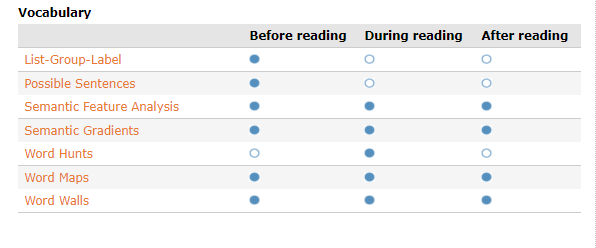
![]()
What is Fluency?
Fluency is reading with speed, accuracy, and proper expression to comprehend. Those who can’t read fluently will eventually lack the motivation to read. Fluency is critical because the reading demands escalate with each grade; students must keep up!
Good fluency means that the child can:
- read words correctly per minute at or above the targeted benchmark. See the table below for fluency benchmarks.
- read aloud without frustration or difficulty
- read aloud with expression
- chunk words into meaningful units
- pause at significant breaks within sentences or paragraphs
- track print
If they can’t, then:
- Assess to be sure that decoding or word recognition is not the issue.
- Give your child independent-level texts to practice again and again. Time them and regularly calculate the number of words read correctly per minute.
- Have your child match his voice to a tape-recorded reading.
- Read a short passage and have your child immediately read it back. Start with books with predictable vocabulary and clear rhythmic patterns.
- Have your child practice reading a passage with a certain emotion to emphasize expression and intonation.
- Incorporate timed repeated readings.
- Explicitly teach your child to pay attention to clues in the text, such as punctuation marks, that provide information about how the text should be read.
- Reading Rockets gives directions to the following activities before, during, and after reading.
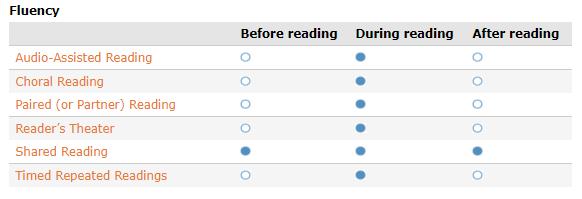
Words Per Minute By Month/Grade/Level
To calculate WPM:
___words in the book divided by ___SECONDS it took to read X 60 = __WPM
For example, say there are 207 words in a book. The child read it in 3 min. 25 seconds, which is 205 seconds. 207 divided by 205 is 1.0 words per second x 60 = 60 WPM! Words Per Minute
![]()
What is Comprehension?
Comprehension is understanding and interpreting what is read, combining reading with thinking and reasoning. To understand accurately, one must decode, have reading fluency, make connections, think deeply, have sufficient vocabulary, draw conclusions, infer, determine importance and cause/effect relationships, analyze characters, and more!
Good comprehension means that the child can:
- concentrate on the main idea of the passage, not just the details
- can tell the outcome of the story as well as why things turned out that way
- go behind what is presented in the book to think about why the characters did what they did and what may happen next
- bring up relevant information when making connections
- use and understand a broad vocabulary
- tell the precise, logical sequence of events in the story
- pick out key facts in an informational text
- visualize what is going on in a written passage
- use outlines, maps, and notes as they read
If they can’t, then:
- Do a modified version of Nancibell’s Visualizing/Verbalizing by teaching the student to form mental pictures as they read – starting with word-by-word, then to whole sentence, then to whole paragraph, and then to whole page. Start with the noun in the first sentence – for example – dog. The dog ran. Have the student thoroughly describe what they visualize for the dog. Ask the student questions about the dog’s size, color, shape, mood, background, time of day, sound. Tell the student, “Your words make me picture… Now tell me what the running looks like…” When the student becomes proficient in word-by-word visualization, move on to larger chunks – sentence visualization, paragraph visualization, page visualization. The student must be very descriptive. Ask about what they visualize: size, color, shape, mood, number, background, time of day, sound, and perception.
- Ask your child open-ended questions before, during, and after the reading. See Open-Ended Questions.
- Teach the structure of narratives (problem, high point, resolution) and informational texts (describe, compare/contrast, sequence of events, problem/solution, and cause/effect). See my nonfiction page: Nonfiction Text Structures.
- Discuss the meaning of words; target a few words for deeper understanding.
- Teach note-taking skills and summarizing strategies. (A quick way to summarize fiction is to fill in this frame: Somebody____ wanted_____ but_____ so _____.)
- Use graphic organizers.
- Use and revisit target vocabulary words. Make flashcards of key terms to remember.
- Teach your child to monitor understanding by summarizing orally after each paragraph; at the very least, have your child keep answering who/what after each page. Then, have them go back and reread if they can’t recall.
- Teach your child how to make predictions through modeling.
- Do a picture walk before reading. If there are no pictures, skim and scan to get a brief idea of the subject/topic. What does your child already know about this subject/topic? Making connections and activating prior knowledge helps with comprehension.
- Discuss with your child what they have read.
- Reading Rockets gives directions to the following activities before, during, and after reading.
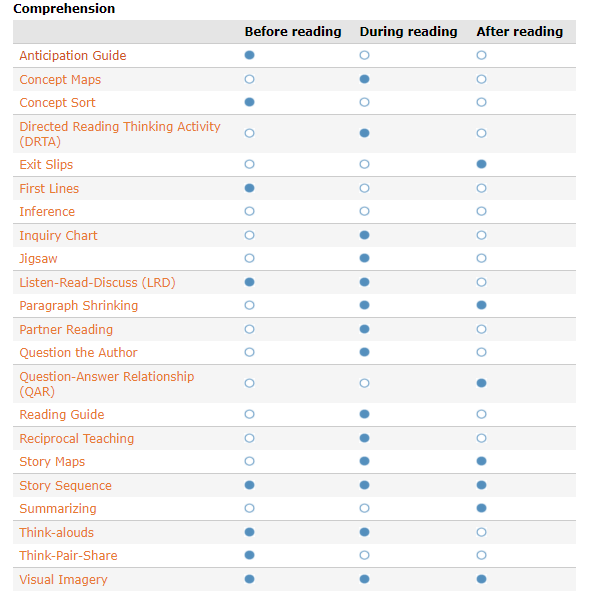
 No donations from my school, please! I am here to help you! 🙂
No donations from my school, please! I am here to help you! 🙂
Copyright 05/04/2012
Edited on 03/14/2024
Copyscape alerts me to duplicate content. Please respect my work.

![]()

